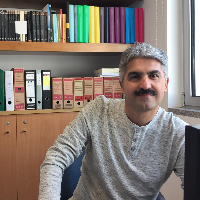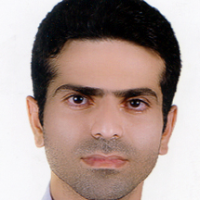Application of stakeholder analysis in designing the framework and identifying priorities for organizing land use in the south basin of Urmia Lake
One of the important factors for success in organizing and managing natural resources, including agricultural lands, is identifying stakeholders and studying their behavior. An analysis of the potential, roles, demands, information, and knowledge of project stakeholders to interact and coordinate with them will greatly help to estimate their expectations. Without accurate and complete identification of all stakeholders in the management and organization of agricultural land, the logical and acceptable results of decisions cannot be assured. As such, stakeholder involvement and participation is considered the cornerstone of planning and organizing any work, so that it is one of the tools for achieving sustainability and democracy. Stakeholder involvement and participation is considered the cornerstone of planning and organizing any work, so that it is one of the tools for achieving sustainability and democracy. Stakeholder participation leads to the use of common potential, knowledge, and values, which reduce differences in opinions and increase trust between people and officials. This study was conducted to design a framework and identify priorities for organizing land use in the southern basin of Lake Urmia using "stakeholder analysis" method.
This study, with a sociological approach, attempted to analyzing the behavior of users in the field of land use planning in the south basin of Urmia Lake. Hence, this research was closed in 2 steps. First, to understand the farmers' behavior, a survey research will conduct. The research statistical population were the all farmers in the south basin of Urmia lake who were 153 farmers were selected as the sample by a randomized cluster sampling method in the second stage. The sample size is predicted using Cochran formula. The instrument for collecting data was a questionnaire which its validity was confirmed by a panel of experts. The reliability of the questionnaire was confirmed using Cronbach’s alpha coefficient (α=0.74). The data were analyzed using SPSS software. Finally, the "stakeholder analysis" method was used to summarize the results. To perform this section, 28 specialists were selected purposefully according to the subject and objectives of the research.
Results showed that behaviors of "change in the method of planting crops", "change of land use" and "use of native cultivars", in the group of farmers with change of land use, and behaviors of "seasonal migration of the head of the household to another place of work", "increase of use" "Chemical fertilizers and pesticides" and "permanent migration to the city" in the group of farmers without land use change are in the first to third priorities. Also, according to the results, agricultural land management is one of the topics that have received special attention and many stakeholders. More importantly, in most sectors, farmers have been identified as the main and key stakeholders. Therefore, these stakeholders can be included in the group of influencers. It can be concluded that stakeholders are divided into two groups. The first group comprises only those who are directly affected and benefit from agricultural land-use management. Other groups of actors are individuals or groups who, in addition to benefiting from their interests, are influential. Also, Land use change decisions of farmers in the south basin of the Urmia Lake essentially aimed at improving farmers’ economic status through collective actions, such as shifting to animal husbandry a, cultivating products with a shorter growth period changes in planting method and changes in irrigation system. Therefore, improving the livelihoods and food security of farmers is a key in Iran, like other developing countries. In addition to this component, the lack of competent professionals and managers has led to a tougher challenge.
The results obtained in the stakeholder analysis showed that farmers at the farm level are key stakeholders and the main pillar in the design, presentation, and implementation of conservation programs to organize lands, along with the Jihad Agricultural Organization and other government organizations. Designing a framework and identifying priorities for organizing land use as a development approach to use all available capacities requires attention to the institutional dimensions of development, especially the analysis of key stakeholders and the use of various tools by expanding coordination and interaction. The important result is that local communities, especially local leaders, see themselves as partners in the program, which leads to cooperation in the program as well as strengthening their weaknesses. Also, the results showed that farmers are at the heart of land management, particularly in rural and agricultural areas. However, the results show that their behavior in the face of environmental change is more of a personal decision and to the extent of the capacity to exploit individually rather than as a group or following a regular schedule. This makes the existing challenge more critical than before.
- حق عضویت دریافتی صرف حمایت از نشریات عضو و نگهداری، تکمیل و توسعه مگیران میشود.
- پرداخت حق اشتراک و دانلود مقالات اجازه بازنشر آن در سایر رسانههای چاپی و دیجیتال را به کاربر نمیدهد.




